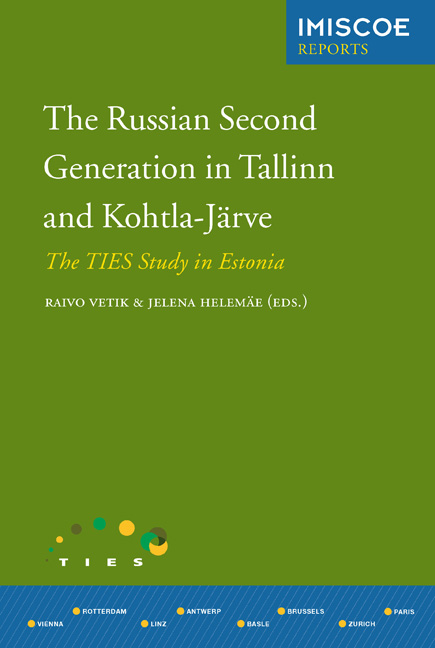Book contents
- Fronmatter
- Contents
- Preface
- List of Tables, Figures and Chapter Appendices
- 1 Introduction
- 2 Migration Patterns
- 3 Integration Policies
- 4 Ethnic Inequalities in Education
- 5 Explaining Different Returns from Human Capital in the labour Market
- 6 Income Inequality
- 7 Housing Conditions Andneighbourhood Satisfaction
- 8 Contact and Crisis in Interethnic Relations
- 9 Gender role Attitudes
- 10 Sense of Belonging to Estonia
- 11 Conclusions
- Appendix
- List of Contributors
- Other IMISCOE Titles
Preface
Published online by Cambridge University Press: 20 January 2021
- Fronmatter
- Contents
- Preface
- List of Tables, Figures and Chapter Appendices
- 1 Introduction
- 2 Migration Patterns
- 3 Integration Policies
- 4 Ethnic Inequalities in Education
- 5 Explaining Different Returns from Human Capital in the labour Market
- 6 Income Inequality
- 7 Housing Conditions Andneighbourhood Satisfaction
- 8 Contact and Crisis in Interethnic Relations
- 9 Gender role Attitudes
- 10 Sense of Belonging to Estonia
- 11 Conclusions
- Appendix
- List of Contributors
- Other IMISCOE Titles
Summary
The integration of the Russian-speaking minority in Estonia has been on the research agenda as a case study as well as an issue worthy of comparison since Estonia regained independence in 1991. There are numerous books and articles devoted to the subject, discussing various aspects of integration processes in the society as well as integration policies carried out by the authorities. However, so far there have been very few studies on the integration of second-generation Russians in Estonia. Our purpose here is to fill this gap in the field – or at least to start doing so.
The data for this volume come mostly from research undertaken as a part of the international comparative project The Integration of the European Second Generation (TIES), led by Maurice Crul and Jens Schneider at the University of Amsterdam. The Estonian team joined TIES as an affiliated partner in 2006 by contributing to the formulation of several sections of the TIES survey and by proposing another perspective: comparison of the Russian second generation to the other immigrant groups already included in the project. The Estonian case study presented in this report followed the theoretical lines of the general TIES project, utilising principal features of the research design, including concepts and their definitions as well as the indicators for those concepts.
Our research team consisted of scholars and students at the Institute of International and Social Studies at Tallinn University in Tallinn, Estonia. Represented are three different departments at the institute: the department of social stratification, the department of lifestyles research and the department of ethnosociology. As coordinator of the project, I would like to thank all the team members for the time and effort they devoted to the project and for their excellent contribution to this volume.
I am grateful for the opportunity the Estonian team had to cooperate with colleagues from the eight European countries that are also part of TIES. We gained a lot from participating in various TIES conferences and workshops during the project, which also proved very helpful in preparing this report. Our hope is that in the future it will be possible to enrich the case study we carried out with studies comparing Russians in Estonia and the other migrant groups represented in TIES.
- Type
- Chapter
- Information
- The Russian Second Generation in Tallinn and Kohtla-JärveThe TIES Study in Estonia, pp. 7 - 8Publisher: Amsterdam University PressPrint publication year: 2012



